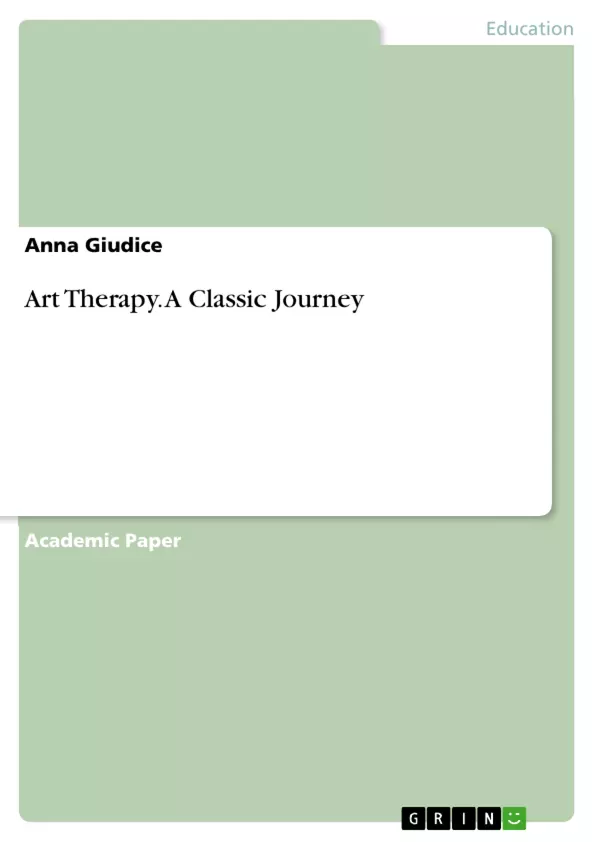This academic text identifies the fundamentals of art therapy, a certain form of therapy focused on using artistic themes.
Art therapy is a form of therapy that uses art as the primary form of expression. Therapists use clients' art to help them interpret and understand their feelings. The process of creating art itself can be therapeutic. Art therapy can help people cope with various mental or emotional issues and has positive effects such as boosting self-esteem and improving self-expression.
Inhaltsverzeichnis (Table of Contents)
- Introduction
- Art Therapy
- Imagery
- Decreased Defenses
- Objectification
- Permanence
- Spatial Matrix
- Creative and Physical Energy
- The Therapy
- The meaning behind
Zielsetzung und Themenschwerpunkte (Objectives and Key Themes)
This text explores the history, practices, and benefits of art therapy, focusing on its development and application as a therapeutic modality for individuals with mental and emotional challenges. It delves into the core principles of art therapy, emphasizing the use of artistic expression as a means of self-discovery and communication.
- The historical development and key figures in the field of art therapy.
- The core principles and techniques used in art therapy.
- The benefits of art therapy for individuals facing a variety of mental and emotional challenges.
- The role of the art therapist in facilitating the therapeutic process.
- The significance of artistic expression as a form of communication and self-discovery.
Zusammenfassung der Kapitel (Chapter Summaries)
The introductory chapter provides an overview of art therapy's historical development, highlighting key figures and events that shaped its evolution. It traces the origins of art therapy back to Adrian Hill's pioneering work in the 1940s, showcasing its emergence as a distinct therapeutic approach. The chapter also explores the parallel development of art therapy in the United States and the establishment of national and international professional organizations.
Chapter 2 delves into the nature and practice of art therapy, explaining how it utilizes artistic expression as a primary form of communication and self-understanding. The chapter emphasizes the therapeutic value of the creative process itself and highlights the diverse benefits of art therapy, such as improved self-esteem, emotional regulation, and communication skills. It also explores the specific advantages of using art as a therapeutic tool, drawing on Wadeson's framework of six key advantages: imagery, decreased defenses, objectification, permanence, spatial matrix, and creative and physical energy.
Chapter 3 focuses on the practical aspects of art therapy, outlining the various roles and responsibilities of an art therapist. The chapter describes the typical tasks involved in art therapy practice, including client assessment, therapeutic intervention, group facilitation, and professional collaboration. It also explores the importance of continued professional development for art therapists and their role in advocating for the inclusion of art therapy in healthcare settings.
Chapter 4 delves into the deeper meaning behind art therapy, emphasizing its role in facilitating self-exploration and personal growth. It highlights the potential of art therapy to address internal tensions and dissociations through the creative process, allowing individuals to gain valuable insights into their emotions and challenges.
Schlüsselwörter (Keywords)
Art therapy, artistic expression, self-discovery, mental health, emotional well-being, therapeutic process, creative process, client-centered approach, professional collaboration, historical development, key figures, therapeutic benefits, art as communication.
- Citation du texte
- Anna Giudice (Auteur), 2024, Art Therapy. A Classic Journey, Munich, GRIN Verlag, https://www.grin.com/document/1484053



